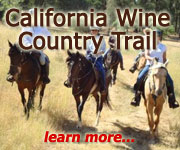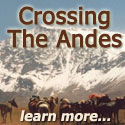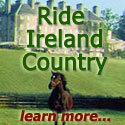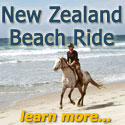Hungarians are very successful in carriage-driving races and have won championships all over the world. Join us and share an unforgettable experience: steering the horses from the carriage.
Hungarians prefer to see their horses driving a carriage. The coach or 'kocsi' is a Hungarian invention, which earned international acclaim very early on. It was light, graceful and ran extremely well.
For centuries nothing comparable had existed in Europe. The best makers of the vehicle lived in the village of Kocs and the whole continent would order their coaches from here. Hence, Kocs was to become the vehicle's namesake. The English coach, the German Kutsche, the Italian Cocci, as well as three other European variants derive from this original name.
During the 5-day course you learn the basics of the Hungarian carriage driving school. In a week people who have no experience at all in carriage driving but loves horses can reach a level where they can hitch two horses to a carriage and ride along a marked part of a course or a field. Additionally, they learn about the equipment, tools used in carriage driving, get acquainted with the Hungarian methods of harnessing and carriage driving, and also get an insight into the world of carriage driving competitions. As a part of the course you take part in a splendid house-race and a one-day long carriage driving tour. You receive a diploma on the completion of the course. The leader of the course is Sándor Fülöp world champion in four-in-hand carriage driving.
The first three nights you will be accommodated at the Hotel Gerébi Mansion and Stables. The Mansion was built at the end of the 19th century by one of the large landowners of the region, Gyula Öttömösi Gerébi. This prominent landowner, who also acted as a benefactor of the poor, established a stud-farm in the manor that has been recognised internationally. As a certified farm manager he developed the estate into an exemplary farm. After his death the Mansion became neglected, its condition deteriorated, and it could not be used. In 1986 following a complete renovation it was reopened as a hotel.
The Mansion’s restaurant mainly offers customary Hungarian cuisine. The goulash soup and the stew prepared in a cauldron, the spit-roasted or barbecued poultry, pork or for that matter ox satisfy the tastes of even the best connoisseurs. Of course the selection also includes scores of gourmet dishes of international cuisine, including numerous vegetarian dishes.
On the last two nights you will be accommodated at the four-star Hotel Eger Park in the little baroque town Eger. In its leisure center you can find an indoor swimming pool, adventure pool, bubble bath, salt-cabin, aroma-cabin, light-cabin, infra-cabin, ice-cabin, steam-cabin, sauna, solarium, fitness club, and cocktail bar.
On the first three days Hungarian Halfbreds will be harnessed in the carriage. The horses are calm Hungarian Halfbreds. With a character close to that of the English thoroughbred, they are an elegant, noble and solid-bodied horses, which are also suited to light, harnessed work. Their heads are noble and lean, with a straight profile.
On the last two days you will meet the Lipizzaners! They are fabulous horses. On May 19th 1580, a decision was made to set up a prince’s farm at Lipizza, which is rocky and situated on top of the Karszt Hill. This is where they tried to produce outstanding, durable horses to display the economy in all its splendour for the Imperial Court. Breeding, in compliance with the fashion of the time, began with Spanish horses, but they searched the whole of Europe for any stallions and mares appearing to meet the required objectives. A total of 8 stallions took part in development of the breed and they founded some lines still recognised today (Pluto, Conversano, Favory, Maestoso, Neapolitan, Siglavy, Incitato, Tulipán).
They are a classical representative of the Baroque style and very willing to learn, very obedient, ready to work hard, and not too demanding. Their movement is distinctive, expressed in lithe and active motion.
The most important farms in Europe for this breed, listed by place of origin, apart from the Slovenian Lipizzaner, are in Piber, Austria, in Dakovo, Croatia, in Fogaras, Romania in Kistapolcsány (Topolcsansky), Slovakia an in Szilvásvárad, Hungary.
There will be theoretical and practical lessons during the five days.
- Argentina's Pampas Ride
- Argentina's Andes Ride
- Costa Rica Beach
- Costa Rica Beach Lite
- France Provence Ride
- France Perched Villages
- France Provence Taste
- France Mediterranean
- France Loire Valley
- Ireland Kinnitty Ride
- Ireland Country Estate
- Ireland Galway Clare
- Ireland Trail Riding
- Ireland Youth Riding
- Italy Taste Of
- Italy Roman Countryside
- Italy Tuscany Villa
- Kenya Masai Mara
- New Zealand Beach
- Portugal Dressage
- Scotland Trail Ride
- Tunisia Sahara Ride
- California Northern Coast
- New York Trail
- New York Adirondacks
- Vermont Green Mountain
- Virginia Hunt Country
- Peru's Machu Picchu Ride
- Peru's Coast Ride
- Peru's Vinak Family Ride
- Spain's Sierra Nevada
- Italy's Tuscany Ride
- California's Wine Country
- Florida Reining Cline
- World Equestrian Games
- Beach Riding Vacations
- California's Coast
- Ireland Cross Country
- Classical Portugal
- Connemara Oceanside
- Costa Rica's Paradise
- Ireland's Country Trail
- England Horseback
- Dressage Tip
- Dressage England
- Hunt Seat Jumping
- Dressage Training
- Horseback England
- Provence France
- Ireland's Galway
- Vermont's Halloween
- Hunt Seat Ireland
- Upstate New York
- Hunting in Ireland
- Greece's Island Trail
- Irish Castles and Ruins
- Matchmaking Festival
- Irish Country Life
- Italy's Tuscany Trail
- Kenya's Ride
- Kinnitty Castle Ride
- Language Vacations
- Hungary's Castles
- Scotland's Lochs
- France's Loire Valley
- Mama In The Saddle
- Captain Mark Phillips
- Morocco's Villagesl
- Australia's Beach Trail
- New Zealand's Riding
- Portugal's Jumping
- Scotland's Trail
- Italy's Roman Trail
- Singles Costa Rica
- Spain's Coast Trail
- Spain's Madrid Trail
- Provence Vacation
- Texas Trail
- Horseback Ireland
- Tunisia's Trail
- Italy's Tuscany Trail
- Vermont's Fall Ride
- Virginia's Hunt Trail
- Wicklow Ride
- Youth Camp
- Scotland's Argyll
- Scotland's Gleneagles




